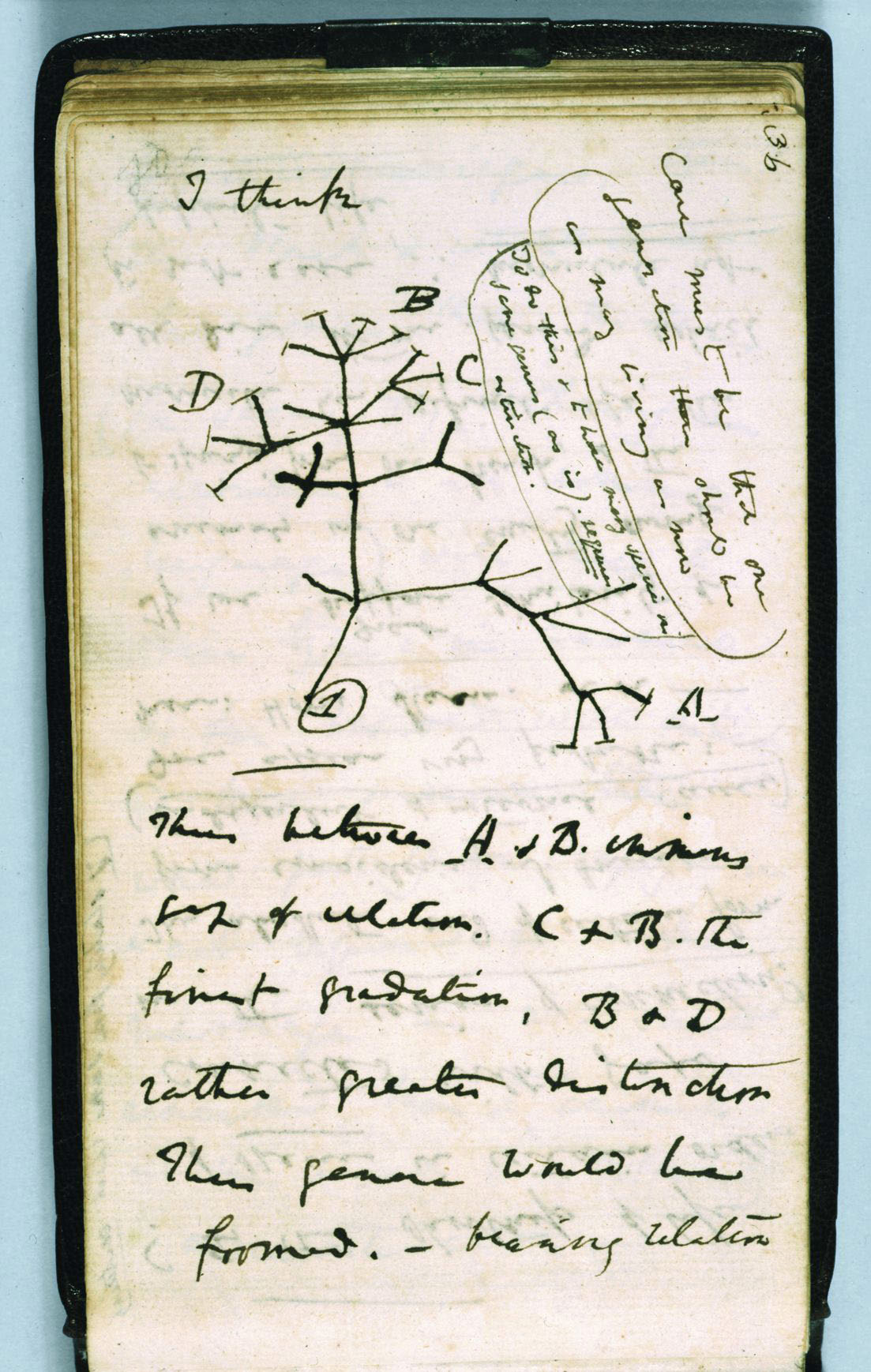
The tree of life is about to go hyper-dimensional.
The two-dimensional tree of life that Charles Darwin first conceived over 150 years ago in his book "On the Origin of Species" should probably look more like a knotted, interlocking forest of trees, scientists argued.
The old-school tree of life, which separates living organisms into starkly divided kingdoms such as bacteria, fungi and plants, doesn't take into account that many genetically divergent organisms rely on each other to survive, said a study published online June 7 in the journal Trends in Ecology & Evolution.
"In our opinion, one should not classify the bacteria or fungi associated with a plant species in separate phylogenetic systems (trees of life), because they're one working unit of evolution," study co-author Debashish Bhattacharya, professor in the Department of Ecology, Evolution and Natural Resources at Rutgers University in New Jersey, said in a statement. "The goal is to transform a two-dimensional tree into one that is multidimensional and includes biological interactions among species." [Darwin Gallery: Darwin on Display]
A tree of life
Darwin originally constructed his tree of life to show how species were related. Organisms, such as dogs and wolves, that are closely related and share many similar features might be on neighboring twigs. Meanwhile, the more distantly related creatures — such as the major kingdoms of plants, animals, fungi, protists, archaebacteria and eubacteria — would be placed on the sturdy limbs at the base of the tree.
But in reality, microbes, viruses and fungi often interact with plants and animals in symbiosis, meaning the two divergent species are dependent on each other for survival. When these life-forms evolve together, they are called symbiomes, the new study said.
The new tree of life should incorporate data from these symbiomes, using a technique called symbiome phylogenetics (SYMPHY), the authors of the study argued. Categorizing and grouping life with this additional layer of information could help scientists better tackle issues like invasive species and sustainable agriculture, the researchers suggested.
Sign up for the Live Science daily newsletter now
Get the world’s most fascinating discoveries delivered straight to your inbox.
"By connecting organisms to their microbial partners, we can start detecting patterns of which species associate under specific ecological conditions," Bhattacharya said.
As one example, if the same microbe tends to cling to the roots of very different plants, but in similar ecological conditions, such as nutrient-poor, high-salt soil, "then we have potentially identified a novel lineage that confers salt and stress tolerance and could be used to inoculate crop plants to provide this valuable trait," Bhattacharya said.
The new formulation could help scientists generally deduce how species and their symbionts interact in greater detail, the researchers said.
"We'd actually have trees interacting with trees, and that sort of network allows you to show connections across multiple different organisms and then portray the strength of the interactions between species," Bhattacharya said.
Originally published on Live Science.

Tia is the managing editor and was previously a senior writer for Live Science. Her work has appeared in Scientific American, Wired.com and other outlets. She holds a master's degree in bioengineering from the University of Washington, a graduate certificate in science writing from UC Santa Cruz and a bachelor's degree in mechanical engineering from the University of Texas at Austin. Tia was part of a team at the Milwaukee Journal Sentinel that published the Empty Cradles series on preterm births, which won multiple awards, including the 2012 Casey Medal for Meritorious Journalism.









